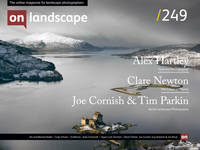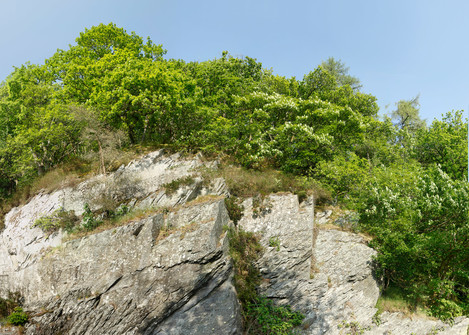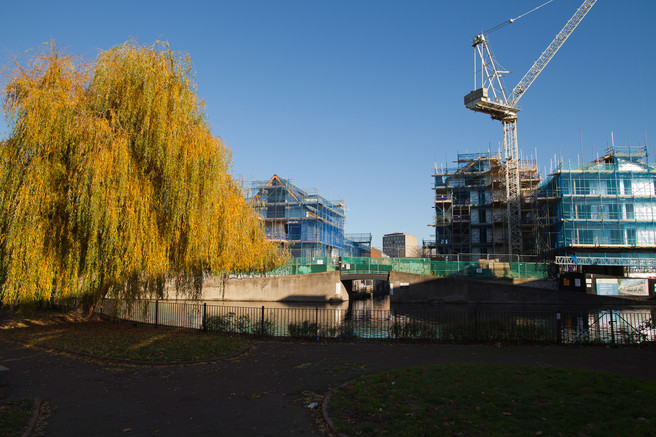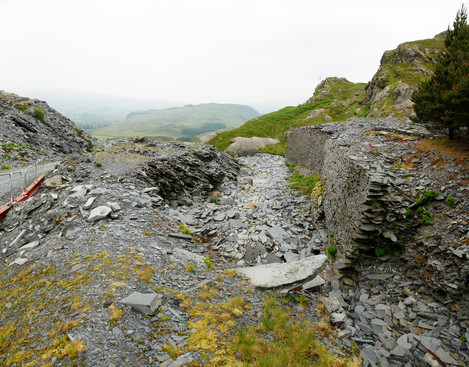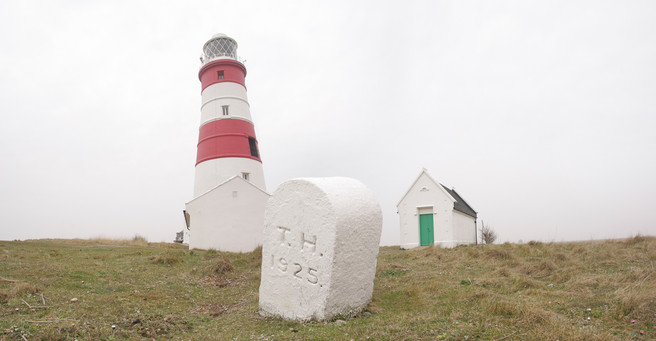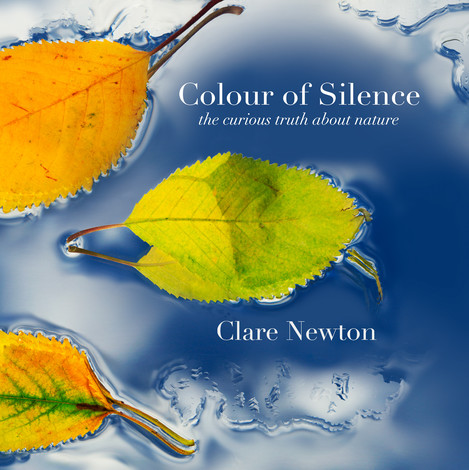Do we have to be a member of a conservation organisation to have a relevant message about preserving nature?

Clare Newton
In 2001 Clare Newton was awarded the British Female Inventor of the Year, with 5 international awards for innovation.
Born in Chelsea, Clare’s creative talents started at a young age, first painting her bedroom with Santa’s gift of oil paints - to building wooden aeroplanes. But she was given her first camera, a little Minolta at the age of 14, it inspired her to build a dark room in the roof of her parents house. Here, she taught herself how to shoot and develop photographs, with neighbours encouraging her with little commissions.
Clare took a degree in graphics in East London and worked as a Graphic designer for many years. Photography really took off for her when the Olympics came to London and she made her first large photographic installation in 2009, called ‘Riches Uncovered’. This was a collection of photographic montages to explain and document East London’s disappearing heritage. It was opened in June by the Chairman of City Corporation’s West Ham Park, Honourable Stella Currie.
Bang! I wake with a start. Bang-bang! I open the shutter to peer into the blackness of the countryside. Another and another – I shout in the hope of stopping the massacre.
A cold thought trembled through me. Earlier that morning I was sitting in a Berkshire field enjoying the warm sunshine, when a family of deer meandered out of the shady woodland, to graze on the nearby grassy wasteland. I must have been upwind as a mother and young fawn strolled just feet away, unaware as I crouched in the tall Fescue blades of grass, transfixed amazement.
The next morning revealed evidence that the entire herd had been wiped out, 12 deer, the only herd in the district. This deeply affected me – my first question as I awoke “What right does a human have, to say whether or not another living species has a right to live?” The contradictions about overpopulation and why is it we look at every other species to blame but ourselves.
I think this is what triggered the making of my book The Colour of Silence.
How did it all begin?
I have taken a strange road into photography, yet it has always been part of my life. I am not talking about happy snappies, but the actual pleasure of picking up a big DSLR and making fine art images.
My true vocation started after a depressingly ignored milestone birthday; I stormed off and discovered large format cameras for sale along London's Tottenham Court Road. Later I introduced my new camera to a friend, who responded by showing me his latest panoramas he had been working on. This new style of photography completely captivated me... and that was the beginning of my new world into photography.
The artist in my photography
You could say I am quite an eclectic photographic artist – I really like pushing myself hard into the different areas that photography offers.
Concerning equipment, I am glad to say that all of my gear is almost vintage and second-hand. Apart from being careful of waste, photography is an expensive pastime, and walking into a camera shop and seeing new powerful cameras with big price tags may be very off-putting. So first I go to a friend who is a professional photographer and ask for a certain piece of equipment to borrow. If the kit appeals to me and aids in the production of a new style of photo that I've imagined, I go to a second-hand website and search for a comparable model. It's a lot of fun and gives me a lot of options.
Choosing the subjects and themes in the book
In my childhood, my favourite subject was biology - mainly due to having a very understanding teacher. I loved dissecting plants then peering through a microscope and drawing their intricate capillaries. This childhood experience has in some way influenced my excitement for discovering the little things I find in nature. Another aspect is that during lockdown we all were discouraged from travelling around. This meant I needed to think laterally about the subjects that I could access and become enthusiastic about. The process of finding the subjects that matched my interests was gradual, starting with conceptualised pieces such as the feathers. This idea is based on how plastic (now a bit of a cliché) interferes with nature. I formulated the sets based on layering with class and translucent plastic then allowed natural sunlight to play on the feathers. However it was too strong so I opted for the diffusion of overcast weather and then used long exposures to get the ethereal effect, mixing feather detail with others having a misty quality to signify different ideas such as disappearing species.
The subjects I chose were ones that could connect to make a curated and undulating journey from the beautiful (could I say traditional forms of nature photography), entertaining through to the unpleasant issue of rubbish accumulation.
The book begins with a series of close-up images designed to look like miniature worlds, reflecting the microcosm of interacting ecology that exists all around us; a bit like following in the footsteps of Darwin – “in the beginning there was the….” I wanted to draw the reader into an ‘observational’ frame of mind and show how bewitching the simplest thing can be if we just take the time to look.
The second transition for subject matter looks at the importance of trees. For me this is a pretty emotional subject because in both the city and countryside I see authorities and landowners tear up mature trees as if they are ‘sustainable’, which trees aren’t really - it takes 100 to 150 Years for a tree to get to a point where it can become an effective ‘carbon sink’, an important point that really needs a great deal more publicity around. My set of images for this section opens with a large composite of a mature oak tree changing into its autumnal cloak of gold (if the image was enlarged to its true size it would measure 1.5 meters, from which you can see every leaf in glorious detail). The following images counteract the complacency of attractive images with the shocking destruction of a mature tree in a forest, where the tree’s soul is ripped out of all existence – there should be no excuse for such an act – the tree was healthy, providing a complex ecosystem as well as effectively scrubbing poisonous carbon from the atmosphere.
It is only recently discovered that untouched woods in Poland, have very wide biodiversity – and that diverse richness when left untouched has a way of regenerating degraded land nearby; a very important lesson that is being learnt by scientists – because take one microorganism out of the equation and the system no longer has the right combination of tools to recover. I am thinking about expanding my thoughts towards making a second book that looks into this new and exciting science. Because this section was so intense, I wanted to lighten the mood with something amusing, thus the switch to anthropomorphism. It was a lot of fun making figures out of garden weeds and combining them with an amusing quote from Lawrence Anthony to create an upbeat mood change.
This ebbing flow of information from passive to acidic can be found throughout the book. I believe it is critical; otherwise, I suspect it is difficult to digest when subjects are all one onslaught of shocking information.
Collaborating with Contributors
Since I don’t have an expert naturist background even though I have a great love for it, I felt it was extremely important to not make the book about my opinions but to give it a wider authoritative context in the narrative. This could only come from professionals in nature and conservation. As I worked up each chapter and subject I spent many hours reading papers and studies, after which I wrote off to many researchers and scientists in their corresponding field of interest. It took a while but by the end, I had eight senior specialists who gave me articles to include.
Using my emotions to express a point in photography
Since lockdown prevented travel, I decided to camp in my dad’s apple orchard for most of last year’s summer. It was here, that I became aware of how a city-dweller’s view of the countryside, differs from a local farmer’s.
In the city, there is so little wildlife that the little we do see, we treasure the moment it comes into view. The farm people I came into contact with see fields as a job to be done – they flay the hedgerows, mow flowering footpaths, shoot rabbits, deer and buzzards. For me, the intense destruction was overwhelming.
The funny thing about nature is we take it all for granted – ‘It will always be there – it will grow back’. We lift our cameras and see the incredible variety that inspires us. For me I really enjoyed what the British countryside has to offer, even the mundane, as it changes my mindset into hyper awareness… spotting the contrasts across shadows or beads of sunlight that highlight in exceptional detail of small dark things hidden in woodland, making the ordinary become beautiful.
This difference between the farmers and myself became a catalyst for collating 6 years of material I had built up, which gave me the determination to portray the delicate elements I found on my walks, showing their intricate fragility. But most of all I wanted to highlight through my work a change of mindset – focusing closer to the fact that humans need to allow nature to exist making room to perform its miraculous duties.
Only as the project progressed did my solitary fears about nature's plight show themselves to be a far larger concern. I realised I was living in romantic illusions, believing that everything was fine and that difficulties only existed in faraway places like Africa or the Amazon. Following some investigation, I started posing acidic and seemingly nonsensical questions to aid my photography;
- How many people would it take to keep a tree alive until it reached a maturity of 100 years?
- With the growing human population versus deforestation, would we run out of oxygen?
- Can something be done to change a mindset of disposable?
I believed it was vital to clarify my ideas with the support of prominent scientists, environmentalists, and nature specialists, asking them about some of the themes I wanted to discuss, after creating the original artworks for the book.
The artistic influences are the result of an extensive investigation into the subject. I enjoy starting off with no knowledge at all because it allows me to connect with my readers and experience the new information through their eyes... As a result, I'll have to offer a subject in chronological order and in an understandable manner. The experts I meet keep me on track and precise on each point, advising me on how to emphasise or identify each message. It's critical that when learning new things, you don't rely on hearsay or assumptions. It gets very messy!
Could there be a different way of perceiving nature?
Nature photography, I believe, is one of the most popular areas in photography, with notable black and white photographers such as Ansel Adams, Fay Godwin, and John Sexton enriching our images of the landscape. Lucie Averill, Charlie Waite, and David Noton, for example, travelled the world to provide us with stunning enriched sunsets.
Rather than emulating these incredible artists, I choose to admire them since I felt I’d be depreciating their genius and originality if my work mirrored theirs. Also, I'd never be able to do justice to my own unique thoughts and photographic style.
In many ways, once I had come to terms with not needing to follow in their footsteps was very freeing, it meant I could experiment un-inhibited and discover where I could fit in with expressing my way of interpreting the vision or how I would push my signature style, enabling me to develop captivating photographs of mundane elements, without them becoming a cliché.
This, I believe, is my basic idea on how to structure a subject in a unique way. Being original and thinking without creative influences is essential to me. I despised it when lecturers would come up to me and suggest things like, 'You should do this – or- look at how good so-and-so designs are.' Yes, these remarks made me quite the rebel! Perhaps my obsession to be unique stems from my training as a graphic designer, when designs were only sold if they were original. This is an excellent discipline for continuing to develop ideas and moving one's thoughts forward rather than relying on trends to guide your style.
Yes, it has negatives as well! – Having doubts regarding the outcome of the handiwork being the right way to portray a message. Ideas and creative influences come from the research into the subject. This leads me to conceptualise about how I am going to explain the subject or story, where the emphasis needs to be, or what’s the best technique to help get the message across.
I think this extract is very helpful to understanding about perceptions in image making;
Perceptions shape the interpretation of information when it enters a social system from an ecosystem, and perceptions shape the decision-making process that leads to actions affecting the ecosystem. While every perception has a basis in reality, some perceptions of nature are more useful because they embrace reality more completely or accurately.~ Gerald G. Marten
When it comes to interpreting thoughts. Traditions and tried-and-tested formulas, I believe is important to let go and trust yourself. Ideas are self-contained by their very nature, as everyone has an independent opinion on a subject. However, as a photographer describing a subject, it is more valuable to create work that does not compromise the truthfulness of a situation. Purity is especially vital when dealing with a delicate subject like nature in close proximity since the reality of truth must exude in order to distil an emotion or mindfulness from the reader.
My work as an artist photographer
I like to call myself a photographic artist rather than an art photographer, as there is a quite big difference between the two. A photographic artist uses the camera much like a paintbrush. Sometimes it’s about shutter dragging but for me, it’s about making composites; each photo is an accurate facsimile of the subject – it is merely a jigsaw piece to a bigger puzzle or vision.
For this project, and for the first time I decided to capture single shots and experiment with different lenses for the first time - yes, I had to overcome my fear of the unknown. However, it allowed me to experiment with new ways of expressing my feelings and create artworks with a clear meaning that could change throughout the book. (By the way, when I say artworks, I'm referring to images, some of which are composites that have been prepared for publication.)
As an experimental photo artist, I felt it was critical to avoid traditional documentary or heightened landscape photography. The voyage heightened my awareness of the image, with some images serving as metaphors to depict the journey.
Nature is an incredibly big subject, so as the project took shape it became clear that through artistic interpretation, there was a need to reveal a narrative – a gentle curation exploring the curious and rich depth of each small subject.
To show life as it actually is, not as we might imagine or desire it to be
Covid's lockdown helped in many ways because I couldn't travel anywhere – all I had to photograph was what was around me. This is a great experience to increase one’s awareness without distractions. During my camping trip, I became a bit of a recluse, removing myself from all human interaction and technology (save the camera and hard drive) so I could focus totally on the task at hand.
I'd spend days ambling over the Ridgeway's woodlands and hedgerows, just gazing and gathering odd items that struck my eye — a skull, a severed limb intact with seeds, or upside down bugs who'd perished in the search of love. The next day, I'd play about with my freshly discovered treasures, watching their shapes change in the midday sun. Textures, translucency, and reflections within reflections would arise, each providing a unique perspective and ‘what-if' scenario. I put them on glass, plastic, and even poured syrup over them. I sprayed, splattered, and hosed until something wonderful happened inside of me!
During the experimental stage, I discovered myself and a new way of understanding the results – it wasn't what was covered, but what wasn't covered that gave me insights into the truth messages — the magic demonstrated that I could develop a metaphor language from what was left untouched. Once I had built the backbone of image style, I worked on complementary landscape photographs that might expand the context and push the story farther to cover the environment, where the small things existed.
Another reason for the style of images not to become stuck in one formula is that a book must be enjoyable before it can be educational; otherwise, people will not want to turn the page. Every page must be exciting – a new experience or bring a sense of adventure. Once that has been achieved the supporting narrative can offer something a bit different – unknown and interesting. That’s where the mountains of research and introductions to specialists are so important in the early stages.
Influences that inspired the making of the book
This quote was written by one of the contributors, it was very influential in helping me chose the right material for the book:
Our human appreciation of the natural world and its processes has been diminished during recorded human ~ Dr Alan Rayner
In the back of my mind, I noticed that today's city generations are completely engrossed in personal technology. People walking with their heads buried deep in their phones, implying they haven't experienced anything of their journey or seen the green treasures along the road. The goal of the book is to show both the distilled essences of nature and to deliver it to people directly. Demonstrating that our natural flora and fauna are one-of-a-kind gems that require people's active engagement with.
The subjects I chose were the closest I could get to something that everyone could find. That way, I could show off their beauty whilst raising awareness. We all see wasps, but how many of us notice the graphic stripes and how distinct each pattern is? We all see spider webs, but can we see how each one is unique and how they catch dew-drops? Or, if one looks through a grove of beech trees crowning a hill, can one see the golden fields behind them and how the moody grey clouds complement the corn?
The book's layout was meticulously planned to provide a balanced speed and undulations between themes. The book begins with a series of familiar but artistic images depicting a variety of things we take for granted, then progresses along the sensitive scale of awareness to the first cruel act of people tearing the heart and life out of a tree. The language moves from debate points to entertaining tales, with pauses to slow down the pace before returning to a highly charged, thought-provoking subject.
As the book draws to a close, the focus shifts to disposable rubbish from the home. It's all too easy to throw anything away, but there isn’t enough imagery to convey the magnitude of the waste problem, or pictures to show that simple packaging doesn’t biodegrade as quickly as one imagines.
I have watched pedestrians toss absent-mindedly a tin can or plastic snack packet into the side of the grassy path - when asked what will happen to it – they just say – “don’t worry it will degrade, nature will take care if it!” So I included images to demonstrate that waste doesn’t dissolve when it is thrown into vegetation – it just stays there, never truly deteriorating.
I will feel fulfilled if my book has improved a sympathetic mindset from readers displaying the beauty within the ordinary side of nature, stimulating a better appreciation for the care that our environment needs from us.
If you would like to buy a personally signed copy of
Email: at Carle at Jump4London@gmail.com
Colour of Silence is published by Happy London Press, £25.

